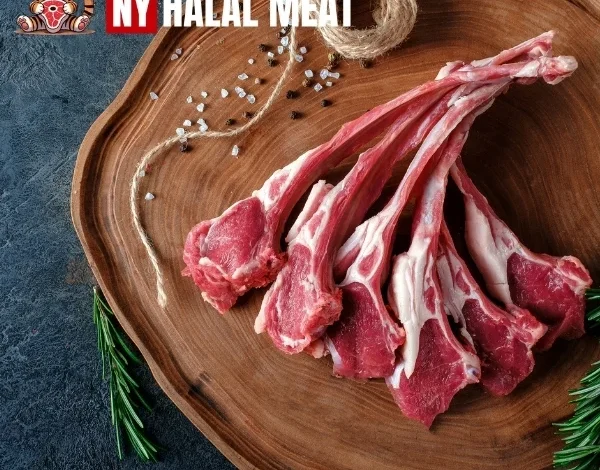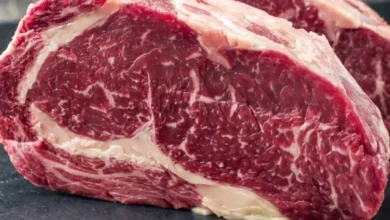
Lamb vs. Mutton: What’s the Difference?
Lamb and mutton are two terms often used in cooking, but many people are confused about the differences between them. While they both come from sheep, there are distinct differences in their age, flavor, texture, and how they are best cooked. Understanding these differences can help you choose the right meat for your dishes, whether you are preparing a quick lamb roast or a slow-cooked mutton stew.
In this article, we will explore the key differences between lamb and mutton, their culinary uses, and nutritional benefits to help you make an informed choice the next time you’re at the butcher or supermarket.
What is Lamb?
Lamb refers to the meat of a young sheep, usually under one year old. Known for its mild flavor and tender texture, lamb is a versatile meat that can be used in a wide variety of dishes, from grilled chops to slow-roasted legs. Because of its youth, lamb is tender and has a more delicate, slightly sweet taste, which is why it is often favored in many Western, Middle Eastern, and Mediterranean cuisines.
Characteristics of Lamb:
- Age: Under one year old.
- Flavor: Mild, slightly sweet, and tender.
- Texture: Soft and tender, making it ideal for grilling or roasting.
- Cooking Methods: Roasting, grilling, braising, stews, kebabs.
Lamb is often used in dishes like lamb chops, lamb curry, roast lamb, and lamb kebabs. It is also commonly seen in Mediterranean dishes such as Greek lamb stew or Middle Eastern lamb shawarma. For those following a halal diet, lamb is a popular and widely available option as it can be slaughtered in accordance with Islamic dietary laws.
What is Mutton?
Mutton, in contrast, comes from an older sheep, typically between two and three years of age. Because of its age, mutton has a much stronger and more intense flavor than lamb. It is also tougher and requires longer cooking times to tenderize. Mutton has a deeper, gamey taste that some people prefer, particularly those who enjoy richer, more robust flavors.
Characteristics of Mutton:
- Age: Over one year old, usually between two and three years.
- Flavor: Strong, rich, and gamey.
- Texture: Firm and tougher than lamb.
- Cooking Methods: Slow cooking, stews, curries, braising.
Mutton is commonly used in traditional recipes that require slow cooking, such as mutton curries, stews, and braised dishes. It’s often a staple in South Asian, Middle Eastern, and North African cuisines, appearing in dishes like mutton biryani, mutton stew, or mutton korma. Due to its richer flavor, mutton pairs well with strong spices and ingredients.
Key Differences Between Lamb and Mutton
Here’s a quick comparison to highlight the differences:
1. Age
- Lamb: Comes from sheep younger than one year old.
- Mutton: Comes from older sheep, typically between two and three years old.
2. Flavor
- Lamb: Mild, slightly sweet, and tender.
- Mutton: Strong, gamey, and more robust.
3. Texture
- Lamb: Soft and tender, requiring less cooking time.
- Mutton: Firmer and tougher, requiring longer cooking times to become tender.
4. Color
- Lamb: Light pink to red.
- Mutton: Darker red to brown.
5. Culinary Uses
- Lamb: Perfect for grilling, roasting, and quick cooking methods.
- Mutton: Best suited for slow cooking methods like stews and curries.
Nutritional Differences
In terms of nutrition, both lamb and mutton provide high-quality protein, vitamins, and minerals. However, because mutton is older and has a higher fat content, it tends to be richer in calories.
- Lamb: Typically lower in fat, making it a leaner option.
- Mutton: Contains more fat, which contributes to its richer flavor.
Both meats are excellent sources of iron, zinc, and B vitamins, particularly B12, which is essential for energy production. If you’re looking for a leaner meat, lamb is a better choice, while mutton’s richer flavor and higher fat content make it a more indulgent option.
Cooking Tips for Lamb vs. Mutton
Each meat has specific cooking methods that best highlight its unique qualities:
Cooking Lamb:
- Grilling and Roasting: Lamb chops and leg of lamb are perfect for grilling or roasting. The tenderness of the meat makes it ideal for fast cooking methods.
- Braising and Stews: While lamb can be slow-cooked, it doesn’t require as much time as mutton. A simple braise can turn a cut of lamb into a tender dish.
- Kebabs: Lamb is a favorite for skewers and kebabs, especially when marinated to enhance its mild flavor.
Cooking Mutton:
- Slow Cooking: Mutton benefits from slow cooking to break down its tougher fibers. It’s ideal for stews, curries, and braised dishes.
- Marinating: Marinating mutton can help tenderize the meat and enhance its flavor. The longer you marinate, the better the taste.
- Curries and Stews: Mutton is a key ingredient in many rich, flavorful curries and stews, where it can cook for hours, becoming tender and flavorful.
Which Should You Choose?

Choosing between lamb and mutton depends largely on your flavor preferences and cooking method. If you prefer a milder, more delicate flavor, lamb is the better option. It’s ideal for quick cooking methods and dishes that require tenderness, like grilled lamb chops or a classic roast.
If you enjoy bold, rich, and hearty flavors, mutton will be your choice. Its stronger taste is perfect for slow-cooked curries, stews, and braised dishes that allow the meat to develop its depth of flavor.
Both lamb and mutton offer unique culinary experiences, and whether you choose one or the other depends on the dish you’re making and the flavor profile you’re aiming for.
Conclusion
Lamb and mutton are distinct in terms of age, flavor, texture, and cooking methods. Lamb is younger, more tender, and mild in flavor, making it perfect for a variety of cooking techniques. Mutton, on the other hand, is older, tougher, and more robust in flavor, making it ideal for slow cooking. By understanding these differences, you can make better choices for your meals, whether you’re looking for a light, tender dish or a rich, hearty meal.





